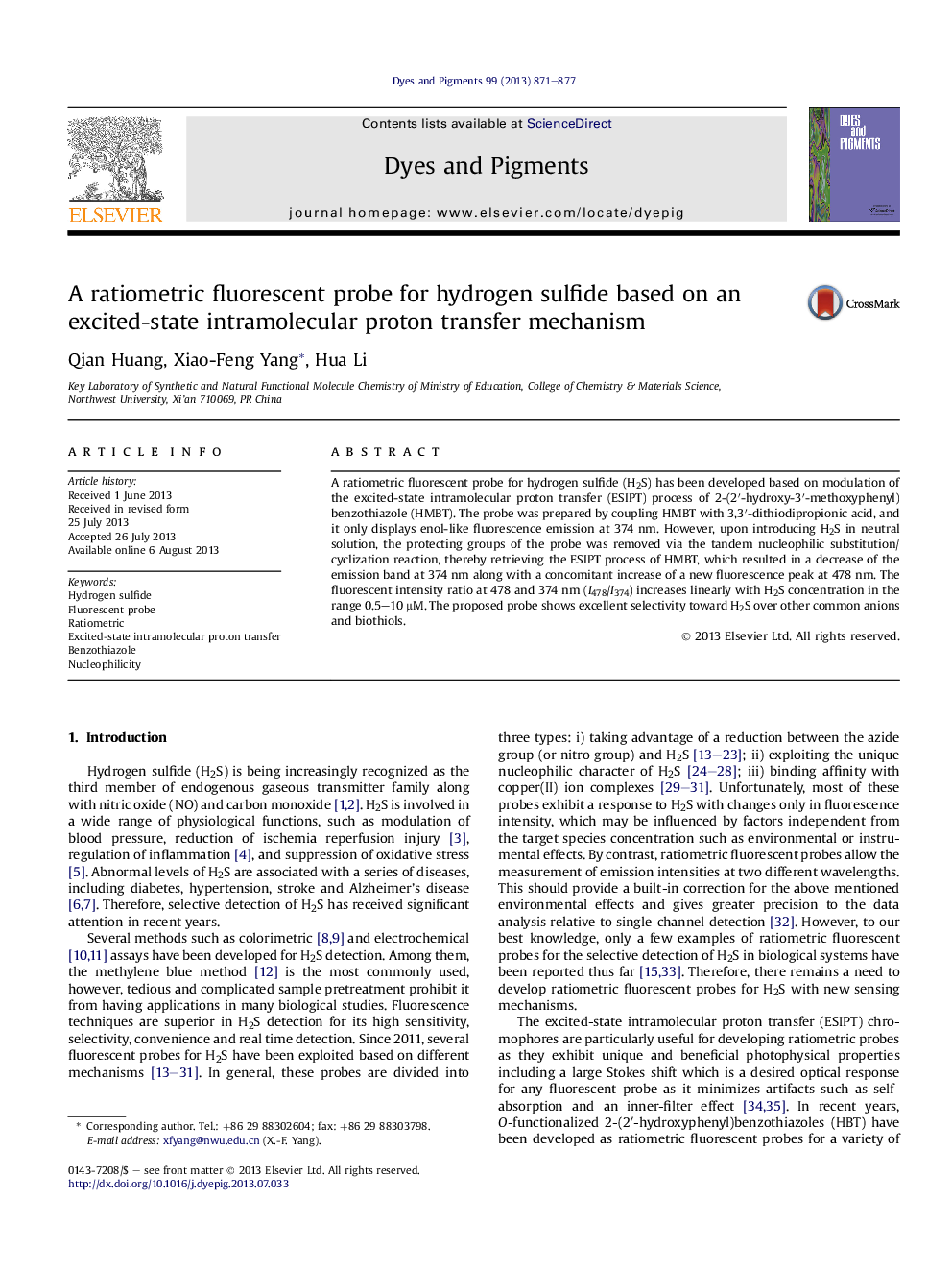| Article ID | Journal | Published Year | Pages | File Type |
|---|---|---|---|---|
| 176378 | Dyes and Pigments | 2013 | 7 Pages |
•A ratiometric fluorescent probe for hydrogen sulfide has been developed.•The probe is operated by a tandem H2S-induced nucleophilic substitution/cyclization reaction.•The ratiometric sensing is realized via modulation of the excited-state intramolecular proton transfer process.•The proposed probe displays high selectivity for H2S over other anions and biothiols.
A ratiometric fluorescent probe for hydrogen sulfide (H2S) has been developed based on modulation of the excited-state intramolecular proton transfer (ESIPT) process of 2-(2′-hydroxy-3′-methoxyphenyl)benzothiazole (HMBT). The probe was prepared by coupling HMBT with 3,3′-dithiodipropionic acid, and it only displays enol-like fluorescence emission at 374 nm. However, upon introducing H2S in neutral solution, the protecting groups of the probe was removed via the tandem nucleophilic substitution/cyclization reaction, thereby retrieving the ESIPT process of HMBT, which resulted in a decrease of the emission band at 374 nm along with a concomitant increase of a new fluorescence peak at 478 nm. The fluorescent intensity ratio at 478 and 374 nm (I478/I374) increases linearly with H2S concentration in the range 0.5–10 μM. The proposed probe shows excellent selectivity toward H2S over other common anions and biothiols.
Graphical abstractFigure optionsDownload full-size imageDownload as PowerPoint slide
